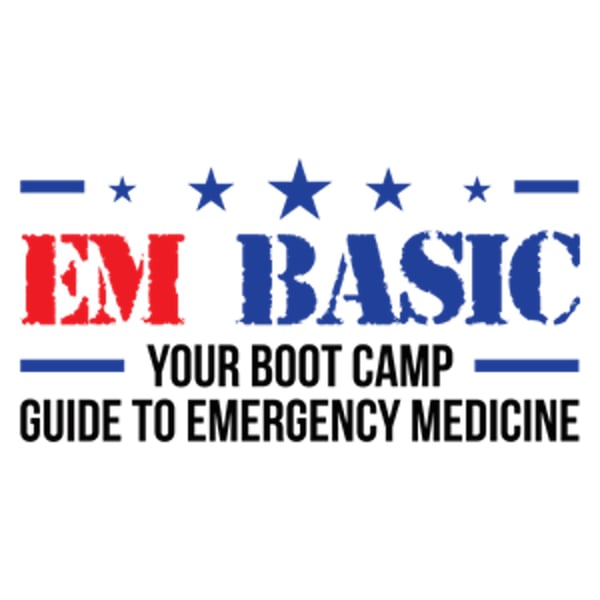Trauma resuscitation part 2- interventions
EM Basic
EM Basic LLC
4.6 • 665 Ratings
🗓️ 5 May 2012
⏱️ 25 minutes
🧾️ Download transcript
Summary
For the second part of trauma resuscitation, we'll discuss the various interventions that you may have to accomplish in the trauma bay. The first part is a continuation from the first episode and talks about the EFAST exam- a vital part of the secondary survey. The second part discusses the control of massive extremity hemorrhage and how to intervene on any airway, breathing, or circulation issue in the trauma bay.
Transcript
Click on a timestamp to play from that location
| 0:00.6 | This is Steve Carolyn. You're listening to the EM Basic podcast. This episode is part two of trauma resuscitation, |
| 0:07.8 | and today we'll talk about the interventions that we need to do in the trauma bay. First, we'll finish up the last episode with a short |
| 0:14.1 | discussion on the fast exam, then we'll go through the various interventions that your patient may need in the trauma |
| 0:19.2 | bay, starting with control |
| 0:20.9 | of massive hemorrhage, then going through the interventions associated with the ABCs. |
| 0:25.7 | As always, this podcast doesn't represent the views or opinions of the Department of Defense, |
| 0:29.2 | the U.S. Army, the Shawshackyam Residency Program. |
| 0:32.3 | First, let me say one thing about how long the evaluation and resuscitation should take in the |
| 0:36.5 | trauma bay. In general, we should always aim touscitation should take in the trauma bay. |
| 0:42.5 | In general, we should always aim to have the patient out of the trauma bay in 10 minutes or less unless the patient needs an immediate life-saving intervention. |
| 0:46.0 | We need to keep things moving forward to get the patient to the CT scanner, the operating room, |
| 0:51.0 | or the ICU. |
| 0:52.4 | It also helps to keep the EDD patient flow moving along because |
| 0:56.4 | trauma patients take up a lot of resources and it can disrupt the care of other patients in the ED. |
| 1:01.8 | So make sure to make your examinations and interventions quick but complete and get the patient |
| 1:07.1 | moving out of the trauma bay as soon as possible. So let's start by talking about the |
| 1:11.2 | fast exam and the e-fast exam. This probably belonged to the last episode under the initial evaluation, |
| 1:17.6 | but I wanted to keep that last episode a little shorter. We really consider the fast exam part of the |
| 1:22.5 | secondary survey because it can tell us a lot about the patient's injuries and whether they may have |
| 1:27.3 | to go directly |
| 1:27.9 | to the operating room instead of the CT scanner. So what is the fast and e-fast exam? Fast stands for |
| 1:34.0 | focused assessment with sonography and trauma. In the fast exam, we look at four different views for |
... |
Please login to see the full transcript.
Disclaimer: The podcast and artwork embedded on this page are from EM Basic LLC, and are the property of its owner and not affiliated with or endorsed by Tapesearch.
Generated transcripts are the property of EM Basic LLC and are distributed freely under the Fair Use doctrine. Transcripts generated by Tapesearch are not guaranteed to be accurate.
Copyright © Tapesearch 2025.

